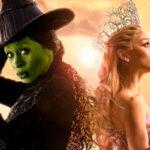

“Singin’ in the Rain” is a classic film that continues to enchant generations with its timeless charm and unforgettable performances. Released in 1952, the film is not only a milestone in the musical genre but also a brilliant example of how art can transform challenges into opportunities.
Set against the backdrop of the transition from silent films to talkies, it captures the magic of Hollywood’s golden age with an engaging narrative and spectacular musical numbers. The story revolves around the behind-the-scenes struggles of the film industry and the characters’ efforts to adapt to new technologies, all laced with plenty of humor and romance.
From its iconic musical numbers to the unmatched chemistry between the leads, “Singin’ in the Rain” offers a wealth of fascinating trivia and details that deepen the appreciation of this true cinematic treasure.
Get ready to dive into a world filled with sparkle and enchantment!
1 – IT WAS A TOUGH JOB
Years later, Debbie Reynolds, who played Kathy Selden, revealed that making the film and giving birth were the two greatest challenges of her life. The experience on set was especially uncomfortable due to Gene Kelly’s harsh treatment. Kelly, who played Don Lockwood and was also the director, was known for his extreme perfectionism. He treated Reynolds harshly, especially because she had never danced like that before.
Fred Astaire, who was working in a nearby studio, found her crying under a piano and reassured her that all the effort would be worth it. And indeed, it was! Decades later, Kelly admitted that he regretted how he treated Reynolds during filming: “I wasn’t nice to Debbie. It’s a surprise that she still talks to me”.
2 – REUSING COSTUMES
Some of the costumes used in “Singin’ in the Rain” were repurposed in another film, “Give a Girl a Break”, from 1954.
3 – MICROPHONE
A microphone was hidden in Reynolds’ blouse to ensure her lines were clearer. In one of the dance scenes, you can hear the beating of her heart, reflecting Kathy Selden’s situation in the story.
4 – WRITING THE SCRIPT
The script was developed after the completion and recording of the songs. As a result, the screenwriters had to create a story that fit the songs, rather than adjusting the songs to the plot.
5 – INSPIRATION FOR THE STORY
The screenwriters acquired a Hollywood home that once belonged to a former movie star who lost his fortune due to the impact of talkies on his career. This episode contributed to the inspiration for the film.
6 – BREAKING THE CONTRACT
The film was a pivotal element in Kelly concluding his contract with MGM. Later, he expressed his dissatisfaction with the company for consistently blocking him from accepting roles in other films, such as “They Came to Cordura” (1959).
Kelly’s extremely hostile attitude, both as an actor and director, during the filming led to the end of his contract with MGM.
7 – A DANCE THAT COST MORE THAN HALF A MILLION DOLLARS
The “Broadway Ballet” sequence required a full month of rehearsals, two weeks of filming, and cost an impressive $600,000, which represented nearly one-fifth of the total budget.
8 – THE CLASSIC SCENE
The song “Singin’ in the Rain” was composed in 1929 for the film “Hollywood Revue,” which means it was not a new composition. As a result, the rain scene was almost abandoned. Originally, the script called for the song to be performed as a trio by Gene Kelly, Donald O’Connor, and Debbie Reynolds.
After some changes, the three were responsible for the song “Good Morning”, while “Singin’ in the Rain” was assigned exclusively to Gene Kelly’s scene.
9 – WAS THE RAIN MILK?
There were some tricks and interpretations regarding the rain effects. One theory suggested that the rainwater was mixed with milk to make the drops more visible. However, this information was not confirmed by the producers later.
According to them, the effect was achieved solely through the chosen lighting.
10 – SINGIN’ IN THE RAIN AND WITH A FEVER
Gene Kelly had a fever during the filming of the iconic scene where he sings “Singin’ in the Rain.” It is not clear how long it took to shoot the scene; some say it was done in one day, while others claim it took three. At that time, the actor had a fever.
Additionally, Kelly had to change outfits several times because the suits shrank when drenched.
11 – PART OF THE FILM WAS DESTROYED IN A FIRE
In 1978, a devastating fire at Warner Bros. engulfed the studio’s film archive, resulting in the destruction of many original copies of classic films. Among the irreparable losses was the original copy of “Singin’ in the Rain”.
Although the film survived through backup copies and subsequent restorations, the fire marked a significant loss for film preservation, highlighting the vulnerability of historical archives and the importance of measures to protect these treasures.
The incident underscored the need for careful preservation and awareness regarding the protection of cinematic heritage.
12 – SNUBBED AT THE OSCARS
It is surprising and unfair that “Singin’ in the Rain”, one of the most iconic and beloved films in cinema history, did not receive any Oscars. Released in 1952, the film is widely recognized for its lasting contribution to the musical genre and its memorable performances, particularly Gene Kelly’s iconic dance in the rain, setting a high standard for musical cinema.
Despite its positive critical reception and lasting cultural impact, the film was completely overlooked in major Oscar categories.
This omission remains one of the greatest injustices in award history, leaving many to wonder how such a significant masterpiece could have been neglected.
“Singin’ in the Rain” is a true cinematic treasure that, in addition to its beauty and charm, is filled with fascinating stories and trivia.
From the challenge of filming the iconic rain scene to crafting a narrative that fit with the already-composed songs, every detail contributes to the film’s enduring legacy. The dedication and talent of Gene Kelly, along with the creativity of the screenwriters and production team, resulted in a work that has transcended time and continues to enchant new generations.
Even with its absence from the Oscars, the cultural impact and influence of “Singin’ in the Rain” remain unquestionable. Revisiting the film reminds us not only of its magic and innovation but also of the indomitable spirit that made it an eternal classic.
It is a celebration of the art and passion that defines the best of musical cinema.








